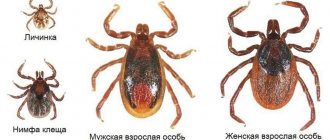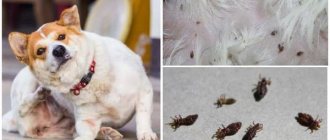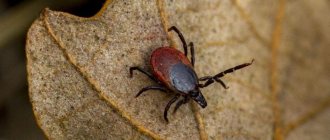The end of summer and the beginning of autumn means not only the return of cool weather, but also the activity of ticks, which can carry infectious diseases. Despite the fact that the intense heat has already passed, every time we go to the country, walk in the forest or park, or work in the yard, danger lurks nearby in the form of small arthropods, which can cause big problems - tick-borne borreliosis and encephalitis. The latter can lead to serious complications: disability and even death. D ILA experts will tell you what these diseases are, what to do and how to protect yourself from this danger.
According to the Ministry of Health of Ukraine, every year more than 20 thousand people seek medical help with tick bites. These insects are active from early spring to late autumn, with peak activity in April-May and August-September. Ticks attack their victims sitting in the grass, or on the branches of bushes, less often - from the ground. There is an opinion that they jump on their victims from trees, but this is not true, because ticks cannot jump, as they belong to the class of arthropods. Ticks search for a long time and carefully for the bite site, choosing areas of the body with delicate skin. Therefore, you can have time to remove the arthropod from your body or clothing before it bites. The bites are practically painless: the ticks stick for 15-20 minutes and release an anesthetic liquid. After a few days, swelling appears at the site of the bite, it turns red and itchy, and the tick itself increases in size. Very small, almost transparent and invisible nymphs of ticks - sexually immature forms of arthropods that are very difficult to notice on skin and clothing - can also bite.
The danger of ticks lies in the fact that they can be carriers of viral and infectious diseases, since not all ticks carry them, but only a group of ixodid ticks. The most dangerous are encephalitis and borreliosis (Lyme disease), but a tick bite does not always mean that you have become infected. The longer a tick remains attached to the skin, the higher the likelihood of infection.
If ticks are found on a dog: what to do?
Seeing a parasite on your pet is extremely unpleasant, but there is no need to panic. First of all, after a walk, carefully inspect and comb your pet, paying attention to the neck, ears, belly, and paws. Small ticks on dogs' fur are not uncommon; the main thing is to detect them in time before they become attached. As a rule, it takes them up to several hours to find a convenient place, but if the tick was very hungry, then everything can happen much faster.
Treatment is not always required after a dog tick bite, since not all of these insects are contagious. Depending on the year, only 3 to 14% of the entire tick population is infected. We will also look at diseases of dogs after a tick bite in this article.
With the right approach to treatment, everything will work out and the dog will survive. Just like in humans, encephalitis in dogs is a serious, complex and dangerous disease.
So, if you find a tick embedded in your dog, what should you do? First of all, the subcutaneous parasite must be removed, and then the condition of the animal must be monitored. The first signs after a tick bite usually do not appear quickly. It is important to know the symptoms of an encephalitis tick bite in a dog and other complications that arise.
Description of ticks
The appearance of the tick resembles a spider. The color of his body is different: beige, brown, gray, black. They have 4 pairs of legs. Digging into the dog's skin, the tick becomes twice as large.
These parasites feed on blood. They always need it, at all stages of their development, for the transition to the next phase and for reproduction. Tick larvae also feed on blood, so you need to recognize them too. They differ from adults in having three pairs of legs instead of four, and a translucent body.
Ticks breathe through their entire body. Thanks to this feature, it is possible to extract them yourself.
If you see a tick on your dog, you need to remove it as soon as possible, otherwise there is a real risk of contracting an infection that you will only find out about after a few weeks. The dog will feel very bad, and if the condition is ignored, it will die. Therefore, every dog owner should know how to remove a tick themselves. This is especially true if it is not possible to immediately take your pet to the veterinarian.
Signs that your dog has been bitten by a tick
Let's consider the behavior of a pet when bitten by a tick. It is quite difficult to detect ticks on long-haired pets, because they are only the size of a pinhead. Signs of a tick bite are as follows:
- anxiety;
- constant scratching;
- scratching.
After a tick bite, a dog always behaves differently. If earlier your pet came after a walk and went to bed, now you may notice that he tosses and turns in his sleep, constantly itches and shakes himself, perhaps even whining.
A dog's reaction to a tick bite is always unambiguous - it is unpleasant and wants to get rid of the parasite. You can only miss the first signs if you are often away from home for a long time. If there are changes in behavior, then look at how to treat a tick bite on a dog, because delay can cost the pet’s life.
Difficulties may arise if the tick behaved atypically - it bit and immediately fell off. In this case, the first signs of a tick bite may not appear at all, and after a couple of weeks the pet may begin to get sick. In the summer, the owner needs to constantly monitor the dog’s condition.
In some cases, the dog gets sick after a tick bite, and you cannot find the parasite. This may be a sign that the tick has completely penetrated the skin (then you can notice bumps on your pet) or evidence that the parasite immediately fell off after infecting the four-legged animal.
Do you doubt that your dog was bitten by a tick? The photo will help you determine if this is true:
As it feeds, the parasite swells greatly and becomes like a dark wart. It is easiest to detect on a dog with light fur. It is difficult to say how long a tick lives after a bite, because it is a very persistent parasite that can draw blood from a victim for a week, but, as a rule, it is noticed within the first three days.
First aid for a dog tick bite
First, you need to remove the tick in one of the following ways:
- manually;
- using a needle;
- liquid;
- thread;
- tweezers.
If you cannot visit a veterinarian after the first signs of a tick bite appear, find and remove the parasite from the wound. It is important that the parasite is not torn apart during the removal process. If this happens, your pet will need qualified help for a dog tick bite, and you will have to urgently go to a specialized clinic.
If you are traveling with a dog in a rural area, find out the address of the animal doctor in advance. It exists even in the smallest villages.
Let's return to the question: the dog was bitten by a tick, what to do in this case? It is necessary to remove the parasite so as not to rupture the body - use a heated needle for this. Bring it to the wound and the parasite will raise its head. Grab it with tweezers and place it in a small jar in case the tick bite worsens. Using a thread or tweezers, you can remove the tick using a twisting motion.
With the help of oil or gasoline, the parasite releases the victim itself after a maximum of half an hour. However, using liquids can cause complications after a tick bite. They can burn the skin or get into the wound and cause poisoning to the dog.
It is necessary to save the parasite in order to select the drug after a tick bite in advance. It can be taken to a laboratory and tested, this will help you recognize an infestation before symptoms appear. At a veterinary clinic, you can have a tick examined for piroplasmosis and completely rule out the possibility of infection; they will also explain how to treat a dog with a tick bite.
With this disease, the function of red blood cells is disrupted. In a neglected state, even the death of a dog from a tick bite is possible.
Carefully examine what the bite site looks like. There should be no parts of the parasite's body left in the wound.
How to treat a tick bite on a dog?
If the wound is clean, then immediately lubricate it with 5% iodine or brilliant green. Be sure to familiarize yourself with what symptoms a dog has after a tick bite. If she is calm and eating, then you can do without a visit to the veterinarian.
Otherwise, you will need treatment for a dog tick bite. At first, pay attention to whether the tick bite on your pet hurts. If you did everything correctly, the wound will begin to heal quickly.
How to remove a tick at home: 3 ways
If it is not possible to visit a veterinarian, it is recommended to remove the tick yourself. The basic rules are as follows:
- All manipulations should be carried out only with gloves. Without protective equipment, you should not touch the parasite, because a person can also become infected.
- It is forbidden to abruptly remove the parasite, since under the skin it straightens the hooks, as a result of which its head will remain in the skin of the animal. Removing parts of the insect's body remaining in the skin is much more difficult.
- The entire tick must be unscrewed, since even the remaining proboscis will poison the animal’s body and cause severe inflammation.
- It is strictly forbidden to crush it so that the infection from the parasite does not get into the wounds on your pet’s skin.
- Removal work is carried out in good light conditions. If the dog cries when you touch the skin at the site of the bite, you will have to administer an anesthetic. You can use it in the form of a spray.
Every owner should know how to remove a tick from a dog in order to keep the necessary tool at hand. To carry out this manipulation, you will need:
- scissors for cutting pet hair;
- oil, petroleum jelly or other liquid that prevents the parasite from breathing;
- antiseptic;
- tweezers or thread;
- magnifying glass
The first method is quite controversial and is not recommended . First of all, the hair of the injured animal is cut off. After this, a special composition is applied to the bloodsucker’s body, preventing it from breathing. For this purpose, oil, gasoline, paraffin, and fatty cream are used. You need to be careful with gasoline and paraffin: paraffin can burn your dog's skin. It is better to use gasoline if there is no oil on hand, since there is a risk that the pet will lick it off, which will lead to poisoning. Veterinarians also use a special ointment designed for this purpose. It is sold in veterinary pharmacies.
After this you need to leave it for 30 minutes. A tick that has not sucked on the skin will disappear on its own after such manipulations. The swollen tick gradually weakens its grip, reaching its paws and proboscis from under the skin. If the parasite does not fall off, the oil is applied again for the same time.
The second method requires using tweezers and a magnifying glass . The parasite is grabbed with tweezers as close to the skin as possible. In this case, you need to be careful not to accidentally crush the tick, which is possible with great effort. After this, the tick is rotated from side to side, carefully unscrewing it. Thus, the proboscis comes out from under the skin.
The third method involves using thread . It is tied into a loop that is wrapped around the proboscis. The ends of the thread are pulled from side to side, gradually removing the parasite from the skin. You also need to work carefully with the thread, since you can cut the parasite's proboscis, after which you will have to use additional measures to get it out.
Having removed the tick, it is examined so that all the legs and head with the proboscis are intact. There should be 4 pairs of limbs. To do this, use a magnifying glass. If any part of the parasite remains in the skin, it can be removed with a disinfected needle.
We do not recommend removing the tick yourself; you should contact your veterinarian. After all manipulations, the dog’s skin is treated with an antiseptic.
Diseases of dogs from ticks
The easiest way to cure a dog is from small parasites called ear mites. They cause otodectosis, a disease that develops only in four-legged animals, popularly called ear scabies. In advanced cases, especially if an ear mite is found on a puppy, it can spread throughout the animal’s entire body. In this case, the canine ixodid tick causes not only discomfort, but also very unpleasant sensations.
What are the symptoms of a tick bite in dogs in this case? The dog begins to itch, and yellow or brown liquid comes out of the ears, and the dog often shakes its head. How to treat a dog for mites called ear mites? In this case, it is enough to use special drops in the ears “Bars” and liquid on the withers.
Where can I get something to treat my dog against ticks? These drugs are available and can be found at places of sale of pet products.
It is more difficult if your pet is bitten by an ordinary tick. It can carry:
- encephalitis;
- piroplasmosis:
- Lyme disease (in rare cases, so we won't cover it).
Diseases caused by tick bites in dogs without modern therapy are fatal. If you notice signs of a tick bite in your dog, you should monitor its condition. Symptoms of encephalitis in dogs develop after 14 days. These include:
- high temperature;
- convulsions;
- motor impairment;
- pain in the neck and head;
- paralysis.
If your pet's temperature rises after a tick bite, you should immediately take him to a veterinary clinic for a blood test. This reaction occurs in almost all dog diseases caused by a tick bite.
Treatment of encephalitis in dogs is quite complex. In each specific case, different drugs are administered.
If a dog is bitten by a tick, treatment at home is impossible. At a minimum, you need to take a blood test. If you find signs of a dog being bitten by an encephalitis tick, then you need to get to the clinic literally in the next few hours; the sooner you show your pet to the veterinarian, the greater the chance that the outcome of the disease will be successful.
To recognize piroplasmosis in dogs, a photo will not help you. In this case, the symptoms of dog illness from a tick bite will be as follows:
- a sharp increase in temperature, and then its decrease to normal;
- body trembling;
- dyspnea;
- pallor of the mucous membranes;
- vomiting and diarrhea;
- staining of urine in a darker color, there may be traces of blood in it;
- hind limb problems;
- refusal of water and food.
Ticks cause different diseases in dogs, but their symptoms are similar, so the first thing you should do is conduct a laboratory blood test.
There is little you can do on your own, pending the results of the analysis. First of all, do not allow dehydration - pour up to 150 ml of clean water into the dog, and if vomiting, inject the liquid rectally or under the skin.
It will be impossible to completely cope with the disease without administering the right medicine. Try to have anti-parasite drugs “Veriben” or “Azidin” in your first aid kit, if you are traveling far from veterinary clinics, then the question of how to treat a dog bite will not arise.
They are administered at the rate of 1 ml per 20 kilograms of weight. If the puppy is bitten by a tick, then 0.5 to 1 ml of medicine will be enough. As an auxiliary therapy, the pet is administered glucose, vitamins B12 and B6 three times a day.
What to do if your puppy is bitten by a tick? The treatment process in this case is not at all different from what needs to be done for an adult animal. However, remember that after a puppy has been bitten by a tick, an analysis must be done. Antiparasitic medications are very toxic and can harm a fragile organism.
What to feed a dog with piroplasmosis? Anti-parasite medications and the disease itself have a depressing effect on the pet’s gastrointestinal tract, so you should not feed the dog, even if it persistently asks for food. A dog injection from ticks that carry piroplasmosis is very toxic, so it is important for your pet to take a course of vitamins.
Disinfect wounds after removing a tick from a dog
The first thing we do after removing ticks from our dog is to treat the skin to avoid infections and other secondary problems. So while you're picking off each tick, have some handy gauze and the dog wound disinfectants we suggest below to apply to each bite wound.
- Alcohol: This disinfectant is very easy to use and effective, but if the wounds are on the face very close to the eyes or mucous membranes, it should be used with great caution or with the use of other disinfectants.
- Warm water and neutral soap: If you have neutral soap at home, this is a very good way to clean your wounds thoroughly. Just put a little soap in your hand and some warm water with a few drops or a small enough spray, and gently and gently rub the bitten parts of these parasites, creating a somewhat foamy layer. Let it sit for 5 minutes or even 10, and remove the soap with plenty of warm water.
- Iodine and water: Iodine is a very powerful disinfectant and although it can be applied directly, there are times when it is better to dilute it with water, especially if the animal has many wounds. Simply soak gauze in diluted iodine and gently pass through the skin, or, place the gauze under the marks and immediately pour out the iodine, picking up any debris with the gauze. Leave the reduced iodine on the skin until your next treatment.
Do the treatment 3 times a day. For iodine, wash the area well each time with gauze soaked in warm water to remove any residue. Allow the skin to air out for a few minutes (half an hour maximum) and then apply the disinfectant again. In the case of soap, the residue was removed immediately and the alcohol evaporated in a short time, although for an extreme clean you can wash the area this way before each cure.
You can also buy creams to relieve the itching that tick bites cause to avoid irritation and prevent your dog from scratching.
Rehabilitation of a dog after a tick bite
We have already figured out if a dog has a tick: what to do and how to treat it. Now we need to consider the features of pet rehabilitation. Pay attention to the diet - it should be light food, and after the dog gets stronger, it should start being given raw, fresh beef.
It is important to remove the bedding after the dog, because there may be ticks in it that have not burrowed into the animal, or residual saliva or urine may remain. A clean and fresh bed will help your dog recover faster from illness.
It is also good to wash your pet with anti-parasite shampoo, put on a special collar and use drops on the withers. As an additional procedure, you can treat the animal with a special spray before each walk.
If you pay attention to protecting your pet, the question of what to do if your dog is bitten by a tick will no longer arise. Remember that each subsequent infection with piroplasmosis will be more severe, because immunity to this disease is not developed.
Differentiation of piroplasmosis and other diseases after a dog bite by a tick should be carried out with diseases such as canine bordetellosis, pyoderma in dogs, and timely vaccination of the dog will help to avoid problems altogether.
Types of damage
The faster a hematoma forms, the more difficult the recovery. Injuries of this type are divided into:
- lungs that develop within a day, accompanied by mild pain and not requiring special treatment;
- moderate severity, the appearance of which requires no more than 5-6 hours, accompanied by noticeable swelling and pain, worsening the motor function of the limb;
- severe, forming within 2 hours after a bruise, accompanied by dysfunction of the limb, acute pain and noticeable swelling.
Treatment of moderate and severe hematomas should be carried out under the supervision of a physician to eliminate possible negative consequences of injury.
In addition to the severity of the damage, there are other criteria for classifying hematomas:
- by depth of location - under the skin, under the mucous membrane, deep in the muscle tissue, under the fascia, etc.;
- according to the state of spilled blood - uncoagulated (fresh), coagulated and lysed (filled with old blood that is not capable of clotting);
- by the nature of blood distribution - diffuse (blood permeates the tissue and spreads quickly), cavitary (blood accumulates in the cavity between the tissues) and encysted (over time, the cavity filled with blood is surrounded by a “bag” of connective tissue);
- according to the condition of the vessel - pulsating (blood flows freely from the vessel and flows back) and non-pulsating (the rupture of the vessel is quickly sealed by a thrombus).
Almost always, hemorrhage poses a health hazard, so to eliminate its consequences, you need to seek medical help immediately after the injury.











